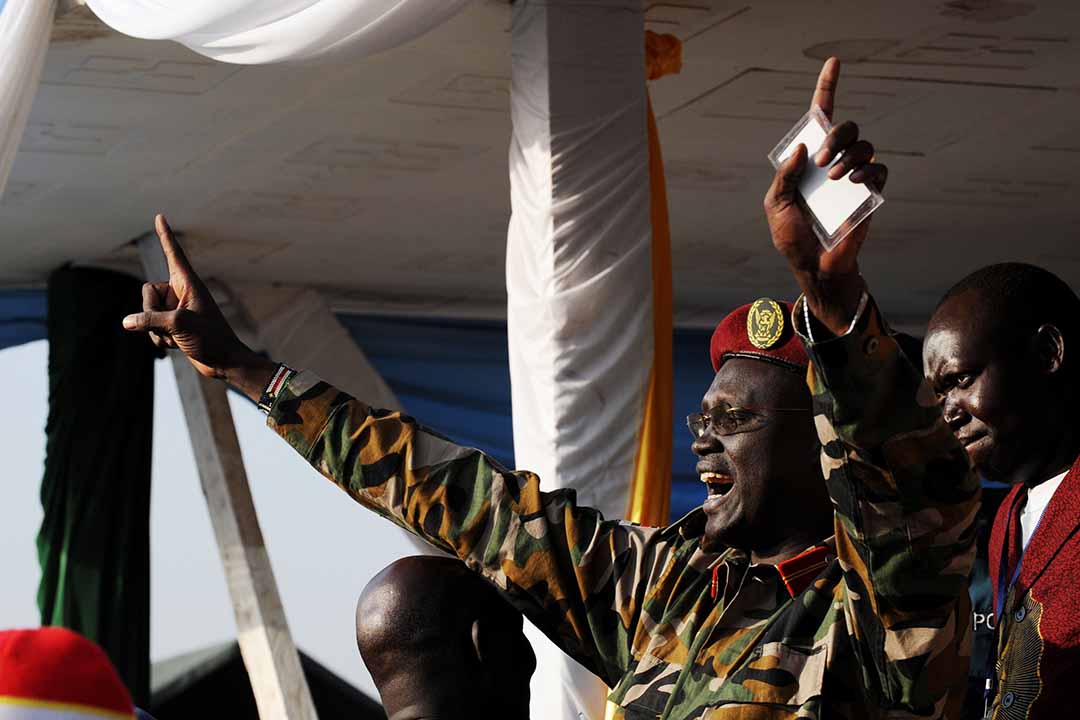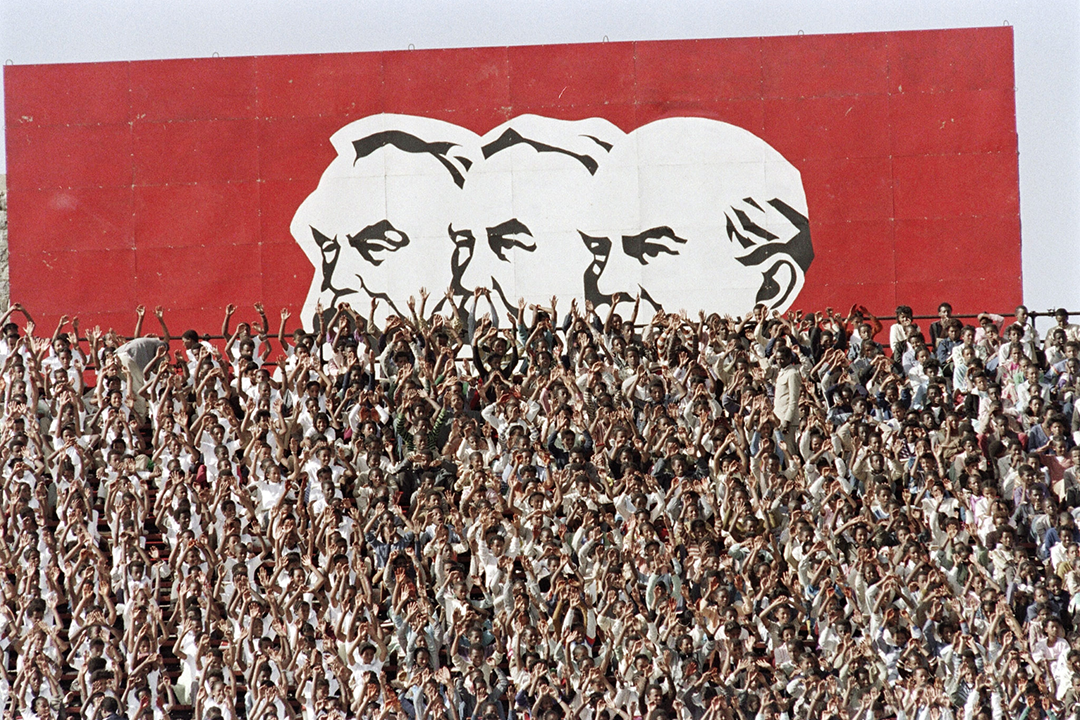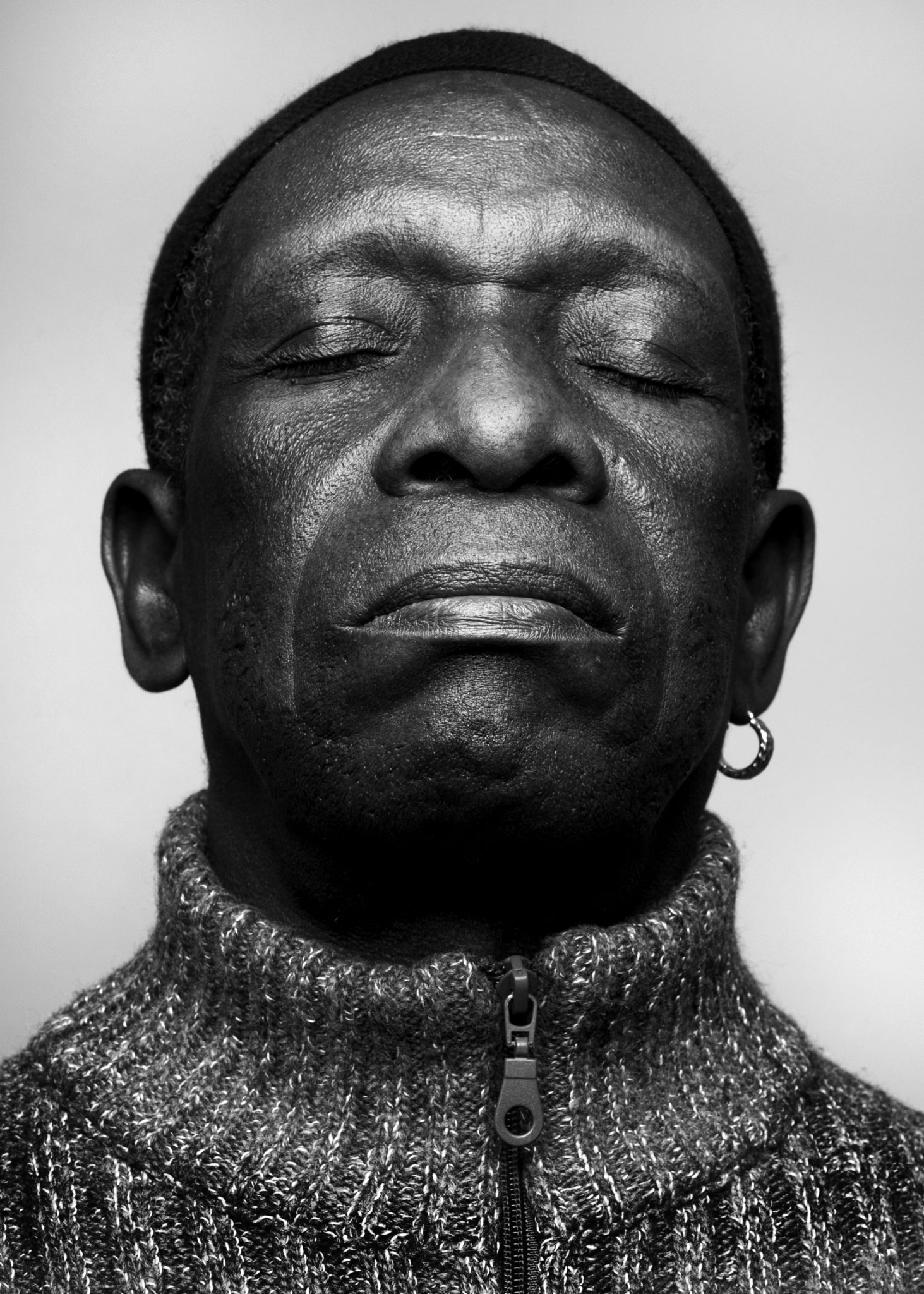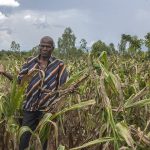Light weapons: a roadmap
Africa has made some innovative interventions to reduce illicit small arms flows, despite a scarcity of data and challenges on several fronts

- A member of the Sudan People’s Liberation Movement (SPLM) armed forces sings moments before casting his vote at a polling station in southern Sudan’s regional capital, Juba, on 9 January, 2011 in the first hours of a week-long independence referendum, which led to the formation of South Sudan. Photo: ROBERTO SCHMIDT / AFP
In January 2017, the 28th Ordinary Session of the Assembly of the African Union adopted its Master Roadmap for Silencing the Guns in Africa (AUMR) by the year 2020. The AUMR recognises that the use of small arms and light weapons continues to destabilise the continent – while the causes and factors driving conflicts in the continent have changed. The document encompasses a number of steps and modalities for action, with a focus on preventing the illicit flow of weapons throughout the region. Among those, reliable information and analysis are critical to understanding the nature, extent and impact of illicit small arms proliferation. It is against this background that the AU Commission and Small Arms Survey undertook the first ever continental mapping of illicit arms flows, with a view to promoting transparency and stronger commitment among African states to use evidence-based approaches to controlling the proliferation, circulation, and trafficking of small arms.
The report, “Weapons Compass, Mapping Illicit Small Arms Flows in Africa”, published in January 2019, unpacks trends in illicit small arms proliferation, reviews examples of existing good practice and summarises recommendations to tackle illicit flows. Defining these illicit arms is not easy because they take many forms. In outline, illicit arms are those “weapons that are produced, transferred, held or used in violation of national or international law” and can include both military-style small arms and light weapons and commercial firearms. The report draws on a review of existing knowledge combined with new research, including consultations with and contributions received from multiple stakeholders, such as AU member states, regional economic communities, regional bodies, and specialised UN and civil society entities.
In particular, between 2017 and 2018 21 African countries and a number of international actors responded to data requests and questionnaires previously prepared by the Small Arms Survey. The mapping that resulted from the analysis identified six major sources of illicit weapons, originating both from within and outside Africa. For better data visualisation and analysis, the continent has been disaggregated into the five regions as designated by the AU (northern Africa, western Africa, central Africa, eastern Africa and southern Africa). Action is required on several fronts, notably at the regional and national levels. The implementation of international instruments such as the Arms Trade Treaty (ATT) and the United Nations Programme of Action (PoA) can contribute to significantly preventing and reducing illicit arms flows on the continent.
Moreover, a number of subregional organisations have been mandated to tackle one or several aspects of small arms issues: in 2016, 22 organisations out of 52 worldwide working to implement the UN PoA were based in Africa. Nevertheless, very few African states have put mechanisms in place to keep track of arms trafficking. Data on illicit weapons is scarce and the scale of the phenomenon can only be roughly estimated. Illicit flows are opaque and difficult to quantify, given the concealed, multifaceted and context-specific nature of the trade. Despite increased international attention to small-arms related issues, to date there has been only limited progress in states’ reporting and transparency on the core issues relevant to arms control. Firstly, information on both the authorised industrial production and transfer of small arms is patchy.
Despite gaps in reporting, though, there is evidence that several countries maintain capacities to produce small arms or ammunition. Curiously, capacity seems to exist in at least 19 states, with most of them located in northern Africa (capacity in Kenya, Ethiopia and Uganda is, though, to be confirmed). Secondly, authorised trade in small arms is also relatively poorly documented as statistics are based on states’ voluntary reporting and less than half of African states report to the main platform, the UN Commodity Trade Statistics Database. The available statistics, however, suggest that the value of reported imports to Africa has been increasing since the beginning of the century, with northern Africa as the subregion that imports the most small arms, averaging $62 million per year, followed by western Africa ($35 million). Thirdly, data on both licit and illicitly held weapons is similarly scarce.
Small Arms Survey’s estimates indicate that civilian actors hold more than 40 million of the small arms on the continent; by contrast, armed forces and law enforcement agencies hold less than 11 million small arms. Past studies used to give an overall figure of 100 million arms in the continent, but the numbers could thus be larger. West Africa has the largest number of both licit and illicit civilian-held firearms on the continent (roughly 11 million), followed by north Africa (10.2 million). Staggeringly, Africa seems to host relatively few small arms compared with other global regions: its rate of 3.2 civilian-held small arms for every 100 people compares well to the rate in the Americas, which is 46.2. Illicit weapons in Africa enter the market at virtually every stage of the weapons’ life cycle.
Legacy weapons from past conflicts in the continent, and in particular from the peak of Africa’s late 1990s/early 2000s civil wars, still constitute the main source of illicit firearms in circulation. However, research indicates other important sources, ranging from recently manufactured weapons to weapons imported recently from outside Africa or diverted from legal commercial flows. The iTrace System, developed by Conflict Armament Research, shows, for instance, that between 1% and 3% of illicit small arms documented in Somalia and Burkina Faso and between 9% of ammunition seen in Burkina Faso and 17% in Somalia have been manufactured since 2010. The source of these weapons is both internal to Africa and external. Cross-border trafficking is a major source of weapons across all of the African sub-regions.
Documented weapons often reflect small scale smuggling of arms and ammunition, but this so-called “ant trade” can involve large volumes of arms trafficked into conflict theatres. As a result, weapons are often trafficked between countries without contiguous borders, or re-circulated across large geographical areas. Smuggled weapons also include weapons that were recently diverted from national stockpiles. Outflows of looted national stockpiles followed the collapse of the Libyan government in 2011, for instance. Weapons of Libyan origin were reportedly trafficked to a number of neighbouring countries and as far as the Central African Republic (CAR) and Somalia. Diversions from national stockpiles remain a primary concern in the Sahara-Sahel region as well as in central Africa.
Weapons from Ivorian stockpiles, for instance, have been recovered in a range of countries, including the CAR, where weapons formerly belonging to Chad and the Democratic Republic of Congo (DRC) have also been found. Diversions from national stockpiles are also a concern in African sub-regions less affected by conflict, as media reports in Madagascar and South Africa show. Diversions from national stockpiles include weapons lost or seized from troops deployed in the context of peace operations. The main actors of land-based trafficking are typically armed groups, criminal gangs, local manufacturers, corrupt security officials, as well as peacekeepers returning from international duty. Smaller-scale trafficking can also involve local border communities. Pastoralist groups in Kenya (Turkana), Uganda (Dodoth) and South Sudan (Toposa), for example, have traded arms across borders to protect themselves and their cattle.
Interestingly, intelligence-based information sharing is currently helping to reveal that terrorist organisations such as Al-Qaeda-linked groups have acquired capacities to move equipment across borders in western Africa. Arms can be also diverted from civilian holdings, although the extent of this phenomenon is particularly difficult to measure. As of June 2018, only 12 African countries had provided statistics to Interpol’s illicit arms record and tracing management system, which allows police agencies worldwide to record detailed information on firearms lost, stolen, or trafficked. Other sources, however, show that the diversion of civilian holdings can be significant. In South Africa, for example, during the year 2015/2016, an average of 20 firearms per day were stolen from private individuals.
The proliferation of unlicensed craft producers represents an enduring threat throughout Africa. Craft production appears to be concentrated in West Africa, where at least 12 countries appear to host craft producers. The weapons produced range from rudimentary hunting weapons to sophisticated firearms, including copies of assault rifles. In some of these countries, the possession of craft-produced weapons is common. Such weapons are involved in 80% of gun-related crimes in Ghana, whereas in Nigeria 17% of rural gun owners hold them. The nature and extent of craft production capacities is less clear in eastern and southern Africa. However, it is known that capacities exist in almost half of AU member states, with the exception of northern Africa. Overall, craft production is the second-most prominent source of illicit weapons.
Many of the illicit small arms circulating in Africa originate from the continent. However, external sources of illicit arms have gained prominence over the past few years. Arms transfer diversions are well documented in the context of arms embargoes. Africa is both a recipient and source of embargo-breaking arms transfers. Violations of the arms embargo imposed by the UNSC on Libya, South Sudan, Ivory Coast, the CAR and Somalia have been documented. Analysis carried out by UN experts and monitoring groups shows that the largest cases of transfer diversions have been directed to Libya, before the strengthening of the arms embargo in 2014. Middle Eastern states have been repeatedly identified as points of origin for several cases of illicit transfers of small arms to embargoed countries.
Yet at the same time, illicit weapons from Libya before 2014 were destined not only for Africa but also for the Middle East. Illicit transfers to Africa, including in violation of arms embargoes, originate also from Europe, notably eastern Europe. A relatively recent phenomenon is the proliferation of converted imitation firearms, which enables the circulation of illicit handguns at a much-reduced cost. While this was initially particularly significant in North Africa, major shipments of readily convertible imitation guns from Turkey have recently been intercepted in, or on their way to, Djibouti, Egypt, Libya, Sudan, and Somalia. In 2017, 25,000 Turkish imitation pistols were seized in Port Kismayo, Somalia. External sources of illicit small arms include the diversion of recently authorised imports of arms and ammunition.
Such diversions were a regular occurrence in Africa in the 1990s, but the phenomenon has decreased to some extent because conflict actors are increasingly relying on more sophisticated ways of procuring small arms already available on the continent. The limited participation of African states on international information-sharing platforms has not prevented the continent from hosting innovative interventions to tackle illicit arms flows, which in a number of cases have proved to have a positive impact on illicit flows. Joint border initiatives represent an emerging area of good practice, such as the joint border commission established between Kenya and Ethiopia and the cooperation agreement between Chad and Sudan. Joint commissions are also being established such as that between the CAR, Chad and Sudan on the one hand and Cameroon, Chad, Niger, and Nigeria on the other.
Sub-regional, cross-border security strategies, such as the Mano River Union Strategy, and regional joint operations are also gaining traction. An example of the latter was Operation Trigger III, a firearms seizure conducted simultaneously in nine North and West African countries by Interpol in cooperation with UNODC and WCO in 2017. Other notable arms-control measures relate to sub-regional and national end-user controls. States such as Burkina Faso and South Africa, as well as regional organisations such as ECOWAS, have developed national and sub-regional end-user control systems. Addressing gaps in the certification and verification of end uses and end users is key to preventing the diversion of arms. The approaches discussed above are, however, limited to specific sub-regions.
The mapping study mentioned earlier has provided a typology for categorising broader illicit arms flows, but many knowledge gaps remain, especially in the area of policy planning. We need more information in a range of areas, such as studies of the demand factors driving illicit arms flows and the scale and nature of illicit arms flows in non-conflict settings. The study also shows that there is room for improving current practices in a number of areas, for instance as regards the disposal of surplus and collected weapons, including those recovered in the context of peace operations. More attention needs to be paid to the quality of national legislation on the enforcement of arms embargoes, as well as emerging threats such as convertible imitation firearms.
Continental and sub-regional instruments designed to reduce illicit small arms flows are in place, but fulfilling such commitments requires engagement at international, regional and national levels. It is recommended that the AU’s political bodies engage with external players to encourage, for example, the main arms exporters to Africa to report their exports. Strengthening cooperation and information exchange at the regional level by establishing sub-regional and national databases to monitor trends will also be key to generating actionable weapons intelligence. Last but not least, national authorities need to change their approach to the coordination of assistance and capacity building efforts, and better support capacity-building initiatives in these areas.
Africa has made some innovative interventions to reduce illicit small arms flows, in line with efforts at the international, regional and sub-regional levels. Raising awareness about them could be a valuable asset in countering the major drivers of illicit weapons flows, and contribute to the successful implementation of the Silence the Guns agenda in Africa.
Sigrid Lipott is an associate researcher at the Small Arms Survey, where she works on illicit arms proliferation and trafficking, arms embargoes, and peacekeeping. She holds two master’s degrees in diplomacy and a PhD in transborder policies from the International University Institute of European Studies. She has worked at the European Projects Association and at the European External Action Service in Brussels














